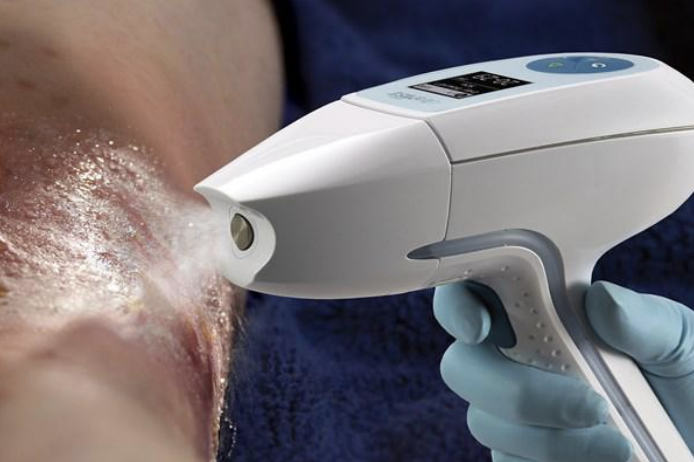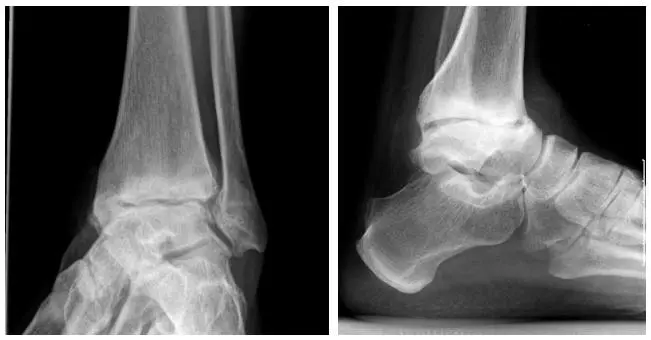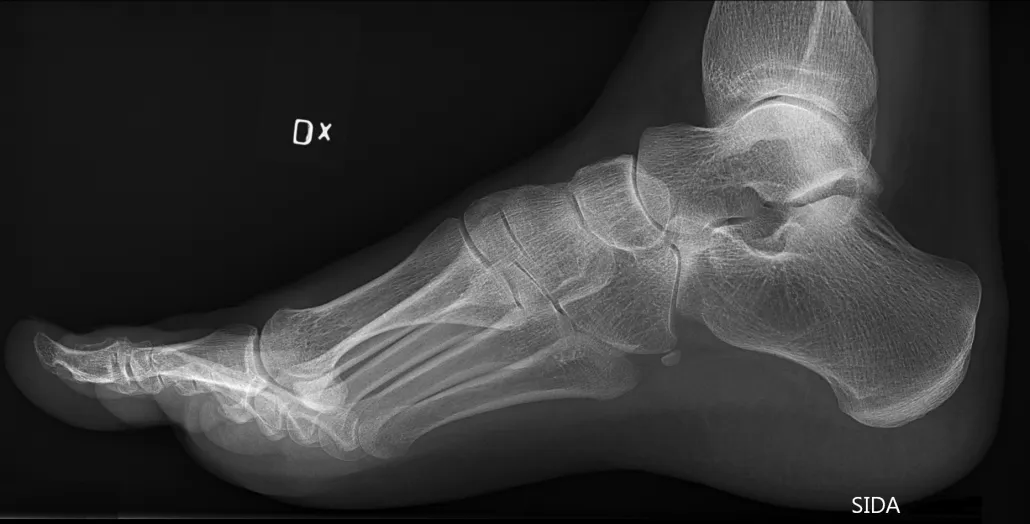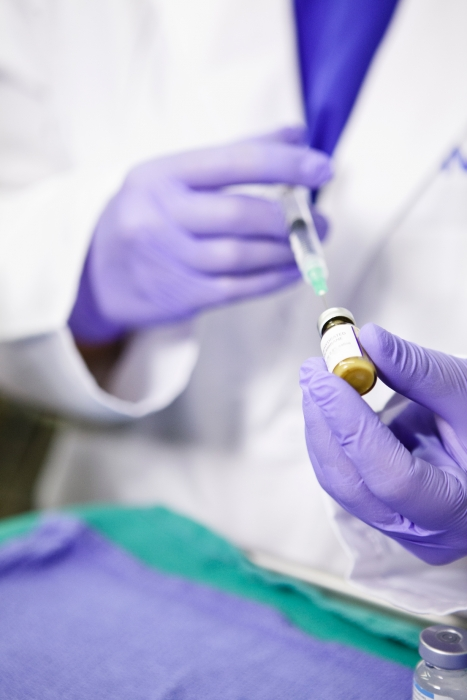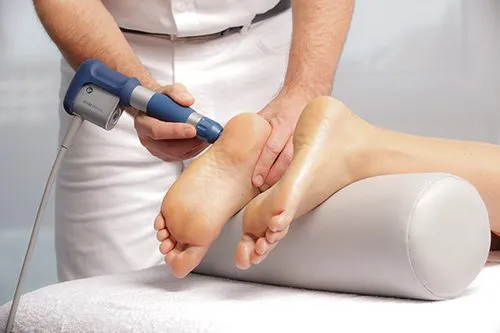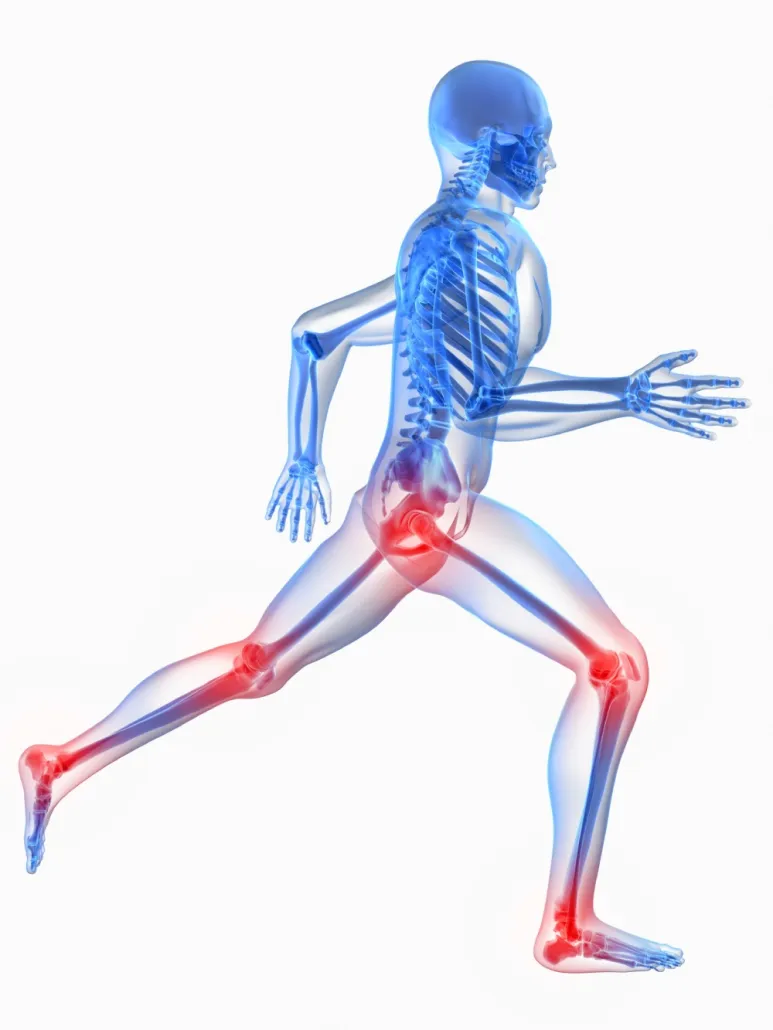

SIX COMMON RUNNING INJURIES
Dr. Jose A. Rivera, DPM, FABFAS
Advanced treatments offered at OrthoRegenX such as Prolotherapy, PRP, Cold Laser, and EPAT (Extracorporeal Pulse Activation Technology) can be of great benefit in reducing inflammation and helping the body regenerate healthy tissue in patients suffering from the following common running injuries.
1. Patellofemoral Pain Syndrome (Runner’s Knee)
Approximately 13% of runners suffer from Runner’s knee pain. It is an irritation of the cartilage on the underside of the patella (kneecap) and
typically flares up during or after long runs, after extended sitting, or when descending hills or stairs. Risk factors include excessive pronation during gait or running, weak quads, weak hip flexors, and/or weak gluteal musculature.
Treatment is directed towards rest by taking some days off, reducing your mileage by 50% or running a distance you can sustain without pain.
Incorporating a dynamic warm up with Gluteal and Hip Flexor strengthening exercises and self myofascial release techniques is important in off-loading the stress at the knee joint. Cross training and shortening your stride during running are also options to consider.
For patients with chronic symptoms, advanced therapies such as Prolotherapy, PRP, Cold Laser, and EPAT (Extracorporeal Pulse Activation Technology) are of great benefit in reducing inflammation and helping the body regenerate healthy tissue.
2. Achilles Tendonitis
Approximately 11% of runners suffer from Achilles tendonitis. Risk factors include training errors (ie. increase in mileage too quickly, surface), tight Achilles tendon, weak calf or gluteal musculature and excessive pronation.
Treatment is directed towards rest by taking some days off, reducing your mileage by 50% or running a distance you can sustain without pain.
Incorporating a dynamic warm up with Gluteal strengthening exercises, self myofascial release techniques, and eccentric stretching exercises is also important in the recovery. Cross training and shortening your stride during running are also options to consider. Immobilization may be required depending on severity and chronic nature of symptoms.
3. Plantar Fasciitis (Heel Pain)
Approximately 15% of runners suffer from Plantar Fasciitis. Risk factors include excessive pronation, training factors (ie. increase in mileage too quickly), weak core musculature and history of low back pain, and tight calf musculature.
Treatment is directed towards rest by taking some days off, reducing your mileage by 50% or running a distance you can sustain without pain.
Incorporating a dynamic warm up with Core strengthening exercises, self myofascial release techniques, and eccentric stretching of calf musculature exercises is also important in the recovery. Cross training and shortening your stride during running are also options to consider. Over the counter orthotics may be used as a temporary method to off-load the plantar fascia. Immobilization may be required depending on severity and chronic nature of symptoms.
4. Shin Splints (Medial Tibial Stress Syndrome)
Approximately 15% of runners suffer from Shin Splints. Common in beginner runners or when undertaking a new training program. Risk factors include runners with very low arches, training factors, and shoes with poor support.
Treatment is directed towards rest by taking some days off, reducing your mileage by 50% or running a distance you can sustain without pain.
Incorporating a dynamic warm up with Core strengthening exercises and self myofascial release techniques is also important in the recovery. Over the counter orthotics may be used as a temporary method to off-load the lower leg musculature . Supportive shoes with anti-pronator bar may be considered.
5. Illiotibial Band Syndrome (IT Band)
Approximately 12% of runners suffer from IT Band Syndrome. It is characterized by pain along the outside of the thigh running from hip to the outside of the knee. Risk factors include weak gluteal muscles, weak hip abductor muscles, and weak hip flexor musculature.
Treatment is directed towards rest by taking some days off, reducing your mileage by 50% or running a distance you can sustain without pain.
Incorporating a dynamic warm up with Gluteal and Hip strengthening exercises and self myofascial release techniques is also important in the recovery.
6. Stress Fracture
Approximately 6% of runners suffer from stress fractures. It is more common in females than males with approximately 13% of female runners developing stress fractures. It is most common in metatarsals of the foot, heel, and tibia. Common risk factor in all populations includes increasing mileage/training too quickly. Specific risk factors in the female population include nutritional factors (insufficient Vitamin D, Calcium levels), decreased bone density and low estrogen levels.
Treatment is directed towards avoiding all high impact exercise and immobilization. It usually requires immobilization in a walking boot or use of a rigid sole shoe. Recovery time usually involves a 4-6 week period prior to being able to return to running activities.

